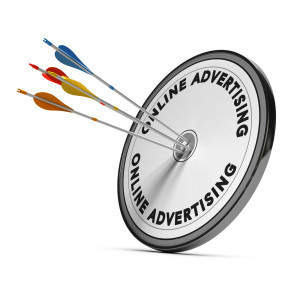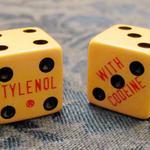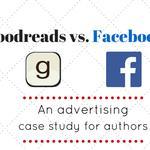Tip #8: To Use or Not To Us, That Is the Question…with Amazon Marketing Services Ad!
 I’d never had much luck with Goodreads advertising, but I have to say that I was excited when Amazon Marketing Services rolled out its ads for indie authors. After all, what could be better than advertising to readers interested in the the same genre or in related products and who were shopping on Amazon at that very moment? I’ve found that every additional click a potential buyer has to make reduces sales. The closer the ad is to the purchase point, therefore, the better.
I’d never had much luck with Goodreads advertising, but I have to say that I was excited when Amazon Marketing Services rolled out its ads for indie authors. After all, what could be better than advertising to readers interested in the the same genre or in related products and who were shopping on Amazon at that very moment? I’ve found that every additional click a potential buyer has to make reduces sales. The closer the ad is to the purchase point, therefore, the better.
After advertising since late January, what have I discovered? I think the program has promise… but with some fairly significant caveats.
First, unless an advertiser is careful, the cost of the ads is going to be far greater than the profit made from increased sales. Ad pricing is based on the number of clicks, and the advertiser controls what he or she pays per click, so in theory it should be possible to keep costs within a reasonable range, especially since, although Amazon requires a $100 minimum budget, an advertiser can cancel at any time. In practice, however, exerting effective control is hard without a fully functional crystal ball. Bid too low per click, and you won’t get enough impressions to generate a decent number of clicks, which means you probably won’t get an appreciable number of sales. Unfortunately, in popular genres, clicks can easily cost more than your royalty per book, especially on inexpensive books. Bid too high, and you’ll lose money…lots of money. The fundamental problem is that each click isn’t going to equal a sale by any means, so it become hard to calculate how much you can afford to bid per click. For example, if you are advertising a book that retails for $2.99, you earn a $2.03 royalty for each sale. That means if you bid a dollar per click, and every click results in a sale, you still make a $1.03 profit. If, however, only one click in a hundred results in a sale, which would be unusual in online advertising, then you end up with a $97.97 loss. Even if every tenth click results in a sale, which would be a great conversion rate, you’re still down $79.70. Just to break even in that scenario, you’d need to spend only about $.20 per click–likely too low for many genres. You can make the numbers come closer to working, but only if you are willing to spend a lot of time on the process.
Second, you’ll have to spend a lot of time on targeting. Unfortunately, genre targeting doesn’t seem to work well, even though it seems as if it should. The one time I tried it, on my very first ad, it produced a pathetic number of impressions and only one click. No, time-consuming as it is, product targeting is the way to go. Unfortunately, selection of products takes time. The ads I dashed through in a few minutes produced the lowest conversion rates. The ones I spent more than an hour on did the best. Obviously, books in the same genre would typically make the best targets, and probably e-books would be better targets than either media, though occasionally a closely related trad published novel in paper would be okay to experiment with. After screening by genre, one of my admittedly unscientific tests was to look at the cover and read the blurb. Then I asked myself the question, did I want to read the book myself? if I did, it became a potential target, on the theory that people who had similar tastes to mine would be more likely to like my writing. I then looked at sales rank, but I also looked at review history. A book out two or three years might not be selling well now, but it might have attracted a lot of attention earlier (and thus have a lot of customers who would be potential recipients for my ads). A large number of reviews usually indicate a book that got a fair amount of promotion, at the very least. I also considered writers I thought were similar to me, as well as titles in which the premise was somewhat related to the advertised book. Precise enough targeting should increase the number of productive clicks–those that actually produce a sale. Whether that number can be raised enough to make AMS ads actually profitable is another question, but sometimes a small, short-term loss can be tolerable if it provides useful data, even more so if it leads to a long-term benefit. Therein lies the third problem with AMS ads.
Third, the data Amazon gives an advertiser is limited, perhaps too much so. You can tell if someone who has clicked your ad buys the product advertised within two weeks–and that’s it. A number of us authors using the service have noticed increases in other areas, but we have no way of knowing whether the ads caused them or not. Common changes include an increase in paperback sales, an increase in sales for other books in the same series if they aren’t all being advertised, and an increase in Kindle Unlimited borrows. I haven’t seen much of the first, but I have seen the second occasionally, and the third is almost reason enough by itself for me to continue advertising. In the months before I knew what I was doing with the ads, I had four or five borrows a month at most. In the first month after I figured out what I was doing, I had twenty-eight. When the ads stopped, so did the borrows. When the ads started again, so did the borrows, coming in at twenty-four that month. It’s hard to escape the feeling that the ads are stimulating more borrows. Twenty additional borrows would net me about $27.20 and change my ROI (return on investment) considerably.
The consensus on the KDP forums seems to be that the advertising program is good for relatively new writers trying to get more exposure. With thousands of new indie books being published every day, actually having people see your book, even if they don’t immediately buy it, could be worthwhile–if you take the time to target your audience properly and manage not to overspend too badly. For more established writers whose sales are fairly study without advertising on Amazon, it may be a much more dubious proposition.
Related articles across the web
 Advertising on Amazon: An Indie Author’s Perspective
Advertising on Amazon: An Indie Author’s Perspective CKSyme.com – A Tale Of Two Social Media Ads: Facebook versus Goodreads
CKSyme.com – A Tale Of Two Social Media Ads: Facebook versus Goodreads



